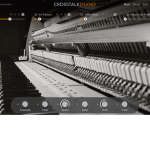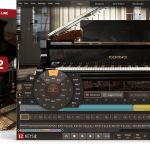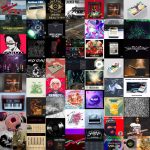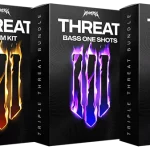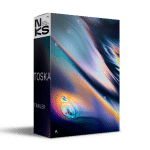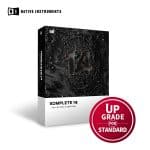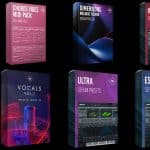Cinematic Composing com Orchestration 1 Cinematic Composing.com Orchestration 1 – Instrumentation & Orchestration Basics
Cinematic Composing.com Orchestration 1 – Instrumentation & Orchestration Basics
For many of us, there is nothing in music more beautiful and expressive than a group of talented orchestral players performing a well-written score. The range of techniques available to each instrument along with the possible combinations of those instruments results in a ‘magic’ that is almost impossible to achieve in any situation.
The problem is that many of us don’t possess the training or experience to confidently generate a decent written score for a string quartet, let alone a full orchestra. And even though recent technology has developed to such a point that it’s possible to create a great sounding ‘mock-up’ with sample libraries and sequencers, unless you have a good knowledge of how all the instruments work and their expressive capabilities and limitations you are at a distinct disadvantage.
There is so much to consider.
Which instruments will be able to deliver rich, emotional performances you need and where are the sweet spots to help them shine? How do you ‘voice’ the sections to give maximum clarity, power, and impact? What instruments combine well to give rich tonalities and which instruments tend to ‘mask’ one another? How do you achieve balance with such a diverse group of timbres and dynamics?
And what if your director requires real musicians? Are you comfortable with generating an actual full written score for a small ensemble or even a full orchestra?
Master Your Orchestra
Whether you’re producing an orchestral mock-up in a sequencer or writing for a group of real players, if you want to deliver an impressive sounding result you’ll need to have a sound understanding of the instruments you are writing for.
And our ‘Instrumentation and Orchestration Basics’ is designed to give you exactly that. You’ll learn all you need to know about the instruments themselves, the range of sounds they are capable of, the roles they play in the orchestra and how to actually write for them to give your compositions the best chance to shine.
Meet your trainer
Marc Jovani, Composer, Teacher, Cofounder of Cinematic Composing
Based in Los Angeles. Has composed soundtracks for more than 50 movies
Has provided music for major studios such as NETFLIX, Amazon, Lionsgate, Syfy, FOX.
His movies have been distributed internationally on leading, nationally broadcasted television channels, including Lifetime (USA), TF1 (France), the Hallmark Channel (USA), Canale 5 (Italy), Antena 3 (Spain), HBO (USA) and more.
His music has been recorded in major studios: Warner Bros (Burbank), EastWest (Hollywood), and others.
Co-founder of Cinematic Composing (2016) with more than 10.000 students and growing
Berklee College of Music: Composition & Orchestration teacher at Berklee (2010-2016)
What You’ll Learn
1. Learn How The Orchestra Evolved
Understanding the roots of the orchestra and how it has adapted over time gives us a powerful insight into its capabilities today.
2. Understand The ‘Balance Of Power’
Learn to appreciate the sonic differences when the number of players in a section changes and how that, in turn, affects the balance of the orchestra in terms of the other sections.
3. Using The Clefs, Transposing, And The Written Score
You’ll learn which instruments are written in which clefs, which need to transpose and how to produce a full score for concert and film scoring projects.
4. Introduction To Score Editors And Notation Programs
How to generate a written score using score editing software.
5. Discover The Construction, Playing Techniques, And Roles Of The Instruments
We’ll take you ‘section by section’ and ‘instrument by instrument’ so you can get a feel of what each instrument is capable of, both in terms of its range, its tonality, and the roles it plays in the orchestra.
6. Understand How To Write For Each Orchestral Section
Now that you’ve learned how to idiomatically write for each instrument and section, now you’ll discover how to write for each section depending on the role that it’s taking. For example, how to write for violins when you need that soaring strings melody singing on top of the orchestra. Or how to make the cellos and basses provide a cinematic solid low end. How to harmonize trumpets and trombones for that climatic heroic motive. Or haw to arrange woods if we want to color a high strings melody. For each section, you’ll have supporting examples that you can listen to and follow along so you understand how each section performs when it’s performing a melody, countermelody, background, bass… and how it sounds different depending on the voicing, unison, or octaves.
The curriculum
Explore Orchestration 1: Instrumentation & Orchestration Basics
There are three sections to this course. Understanding the content in each will help make you a more ‘complete’ composer and help you make great choices at every stage of your composition.
Available on your Personal Computer, Tablet & Smartphone.
The first section covers the basics: evolution of the orchestra, clefs you’ll need to understand, transposing, writing parts, and using a score editor.
The second section is where you’ll learn about the different sections of the orchestra and how to tap into the amazing variety of sounds and techniques that are available with each instrument.
The third section is where it all starts to come together and you’ll learn how to actually write for each section and also the full orchestra. You’ll discover how to voice chords correctly for sections, how to create ‘separation’ so your melodies will stand out and grab your listener’s attention, and how to achieve balance between sections.
Modules includes in this course
MODULE 1. Let’s Get Started! – Basic Concepts
MODULE 2. The String Section
MODULE 3. The Brass Section
MODULE 4. The Woodwind Section
MODULE 5. The Harp and Keyboard Instruments
MODULE 6. The Percussion Section
MODULE 7. Orchestrating for Strings
MODULE 8. Orchestrating for Brass
MODULE 9. Orchestrating for Woodwinds
MODULE 10. Orchestrating for the Percussion Section and the Harp and Keyboard Instruments
MODULE 11. Orchestrating for Orchestra – From Sketch to Orchestra
Homepage:-https://www.cinematiccomposing.com/orchestration1










